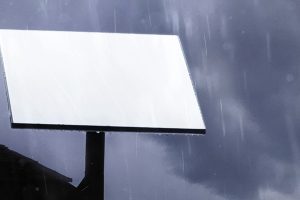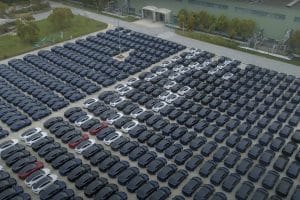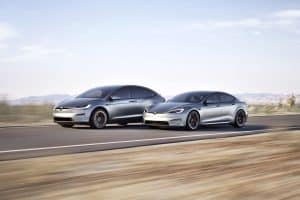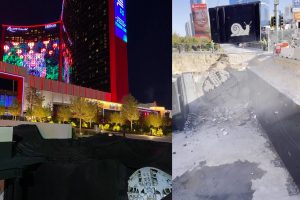Axa Insurance issued an apology for faking the Tesla battery fire today. A few days ago, the company was on a mission to prove that Tesla batteries can catch on fire and simulated a test on public streets. The test involved a Tesla Model S, pyrotechnics but did not involve the batteries, the main object they were trying to prove would catch on fire.
Today, Axa published an apology letter stating that it regretted that this year’s edition of the crash tests “may have conveyed a bad impression of electromobility or created misunderstandings.”
Axa said that it’s been committed to improving road safety for over 40 years and that its crash tests are part of its prevention work to educate the general public. The company then said that its statistics show that owners of EVs are “ responsible for 50% more collisions causing damage to their own vehicle,” compared with drivers of traditional combustion vehicles.
“They also show that drivers of powerful electric vehicles are more likely to cause damage to their own vehicle or to third-party vehicles. It is to these statistical results that we wanted to draw attention during this year’s crash tests while presenting the dangers that can arise in accidents involving electric cars,” Axa said.
The company said that it realized that these particular tests could have misled the public especially anyone who wasn’t on-site during the tests and who could not attend the testing at is various stages.
“During the simulation of an accident in which an electric car catches fire, we had to take measures to ensure the safety of the public. Thus, the test car had no battery and the fire was started remotely. In addition, the crash test carried out with a model of the Tesla brand did not cause damage to the underbody of the car likely to trigger a battery fire, contrary to what the recorded images might suggest. This test, therefore, did not confirm this accident scenario. We should have explicitly mentioned this fact in the communication following the test, in particular in the press release and in the images provided.”
“In retrospect, this test intended to illustrate a supposed risk should have been designed differently. We made it clear in our press release that, according to statistics from AXA Switzerland, electric cars are no more prone to fire than conventional combustion vehicles. Nevertheless, we must recognize that the published images give a different impression when taken out of context.”
“We regret any misunderstandings caused and apologize. We will re-analyze this year’s crash tests in detail, learn from them and use them to strengthen our commitment to road safety in the future.”
MY 2.5¢
It’s good that Axa is taking ownership, here, but I find it strange they are only doing so after being called out by various media outlets for faking the battery fire. My questions still remain unanswered, however.
How is it legal for any company to openly test a vehicle in this manner on public roads? If they were worried about safety, they shouldn’t be testing and setting cars on fire in places where innocent people could get hurt. Did they have a permit or some type of agency approval for testing? Perhaps they do things differently in Europe. I’m not an expert at crash tests. I would assume that the NHTSA would have its own testing facility that is away from the public. Perhaps I’m wrong.
If they want to do these tests the right way then they need to find a safe location that doesn’t give the public access and test the EVs there–with the batteries in the vehicle.





